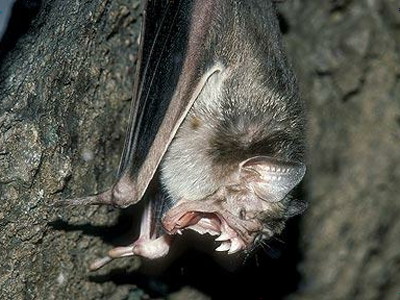There was no sin in rats about the 14th century "Black Death" pandemic that caught humanity

byAlexas_Fotos
It is said to have high lethality and to reduce the world population from 450 million to 350 million in the 14th century pandemicPlagueIs caused by the infection of plague bacteria in the human body. Until now, it has been said that rats carried fleas infected with fungi in a pandemic of the 14th century, but in a new study the possibility of "there was no sin in rats" has been shown.
Human ectoparasites and the spread of plague in Europe during the second pandemic
http://www.pnas.org/content/early/2018/01/09/1715640115
Maybe Rats Are not to Blame for the Black Death
https://news.nationalgeographic.com/2018/01/rats-plague-black-death-humans-lice-health-science/
Black Death: Plague Was Spread by People, Not Rats
http://www.newsweek.com/black-death-plague-spread-people-not-rats-782388
It is also called "black death" because the limbs are necrosed and the whole body dies in black bruises and diesPlagueWas a major epidemic worldwide in the 14th century, 2000 to 30 million people, one-third to two-thirds of the population in Europe, and 85 million people worldwide diedIt is said. In the history, it is a plague that is prevalent several times, but the great epidemic of the 14th centurySecondary Pest PandemicIt is common to think that rats are playing a part of fashion.

However, according to a paper newly published in the Bulletin of the National Academy of Sciences, there is a possibility that rats did not disseminate the second plague pandemic.
Dr. Katherine Dean, a researcher at the Institute for Ecological and Evolutionary Integration (CEES) at the University of Oslo, who conducted the research, said, "Pest has changed greatly in human history, so how It is important to understand why epidemic diseases have spread and why they spread at such a high speed. "
Usually, when a flea infected with plague bacteria strikes humans, the fungus moves through the human body through the bloodstream and gathers in lymph nodes that exist in several body bodies. Then the lymph node swells greatly,GotoIt will be in the state. This is what we call "bubonic plague".
The plague has often occurred after the Middle Ages, and in 2017 it was prevalent in Madagascar enough to be said to be "the most serious in the past 50 years" in Madagascar. In these epidemics, it is thought that rats played a part of that. My fungus also moves to fleas and ticks that have suffered from infected mouse rats, so if a host mouse dies, fleas and ticks will start sucking humans.
Pest vigor in Madagascar The most serious in the past 50 years - BBC News
http://www.bbc.com/japanese/video-41979673

Many researchers thought that the second plague pandemic was caused by rats, from the method of infection of today's pest and the genetic information of the medieval people who died in the plague.
However, while the secondary pandemic has traveled much faster than today's pandemic, and mass mortality has been reported before the recent pest epidemic, the secondary pandemic contains There are also historians who doubt the view that "rats spread the plague" because there is no description that rats died at the same time.
Therefore, Mr. Dean et al.'s research team, based on how human beings, rats, fleas, lice and the like behave,OutbreakWe used mathematical equations to simulate the increase and decrease of mathematical models.
Running a model such as "fleas move by contact between humans and humans" or "move fleas from human to human beings through human beings" multiple times, which model matches nine outbreak death patterns occurred in Europe As a result of evaluating whether 7 out of 9 outbreaks said that the pattern that the plague spread by contact between humans was closest to the actual pattern.

byMonique Laats
This result is contrary to the idea of many researchers. However, according to the research team, adding further experimental data will make it possible to further improve the model, so it seems to be one thing to cast a stone on the cause of the controversial plague epidemic.
Related Posts:
in Science, Posted by darkhorse_log







